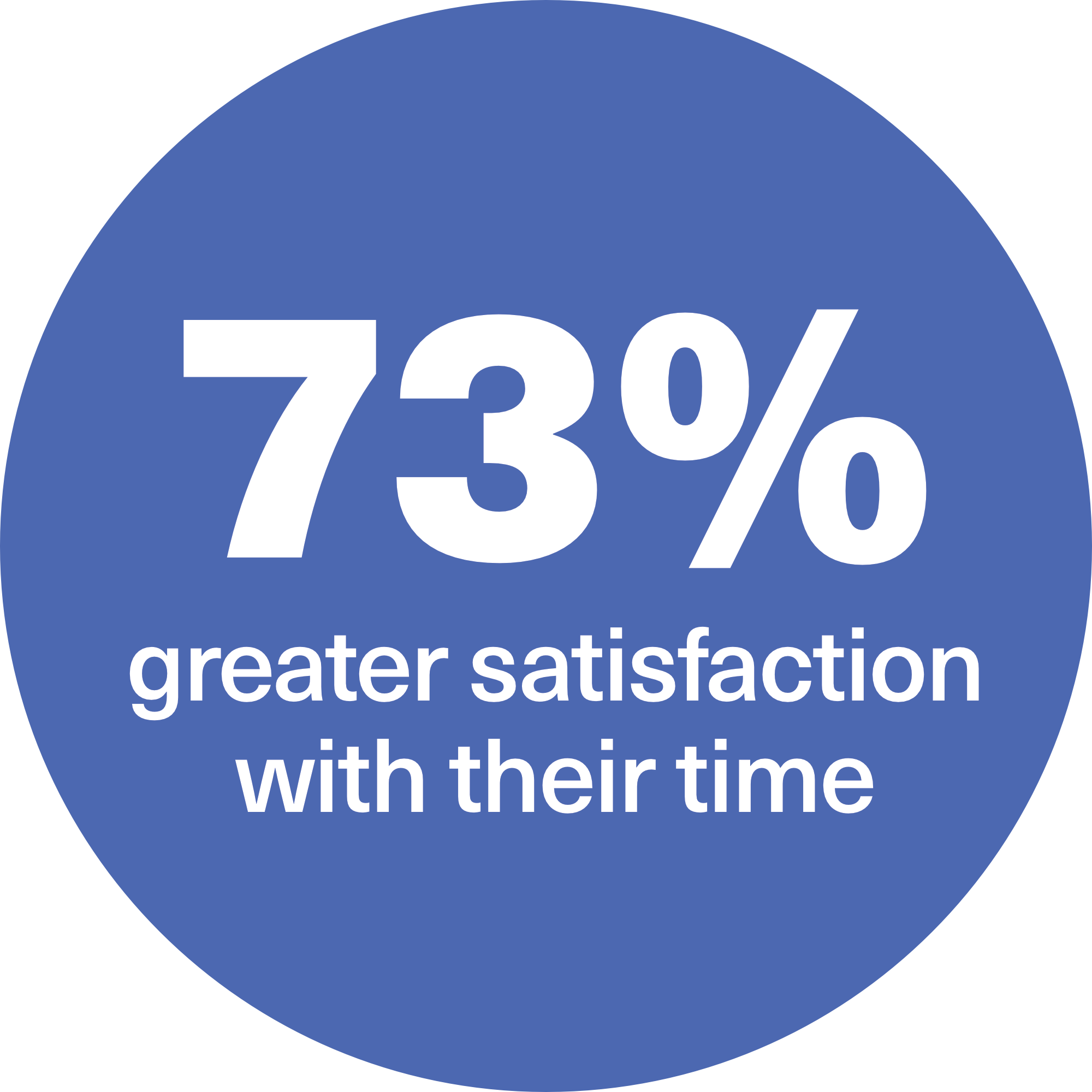
Why trial a 4 day week?
The 4 Day Week has proven to be transformative to businesses around the globe, and it’s our mission to give everyone the opportunity to be a part of the change.
As part of our pilot program, you will be given the tools and guidance necessary to successfully implement a trial of the 4 day week in your business.
But don’t just take our word for it, check out some of the incredible results we have seen from businesses who have taken the leap.
New global research on benefits of a 4 day week
-

PRODUCTIVITY
Shift your business away from measuring productivity based on hours worked and towards measuring based on results. A wide range of organisations in a variety of industries all over the world have been extremely satisfied with their companies’ productivity when piloting a 4 day week, with 91% opting to continue once their trials conclude.
-

PERFORMANCE
Enhance your business performance while improving your bottom line. Companies rated their overall experience with the 4 day week trials an 8.5/10, with great satisfaction in performance observed. Revenue rose an average of 35% over the course of the pilot, when compared to a similar period from previous years.
-

RECRUITMENT
Give your business a competitive edge when it comes to attracting top talent and help retain your best employees by cutting down on unplanned attrition. Results show that workers on a 4 day week are 57% less likely to quit their jobs.
-

ENGAGEMENT
Create a more energized, efficient, empowered and motivated workforce that’s focused on organizational priorities, delivering outputs and achieving key targets. 'Employees report feeling more productive and better able to do their jobs, with 55% reporting an increase in their ability at work on a 4 day week.
-

WELL-BEING
Improve your team’s work-life balance and deliver transformational benefits to their daily lives. A remarkable 73% of workers on a 4 day week observe greater satisfaction with their time. They also enjoy improved physical and mental health, with 71% feeling less burnt out, 39% feeling less stressed and 54% feeling a reduction in negative emotions.
-

SUSTAINABILITY
Reduce the carbon footprint of your business through reduced commuting and energy use, as well as enabling more sustainable lifestyle changes among your workforce outside of work. Our research found that commuting time falls by an average of half an hour per person per week.
-

GENDER EQUALITY
Enable a better distribution of caring responsibilities between parents, while levelling the playing field by reducing barriers to women achieving senior positions at work and reducing childcare costs. Men on a 4 day week are found to take on a greater share of housework and even more childcare, while 21% of employees report a reduction in childcare costs.
-

INNOVATION
Future proof your business to the changes brought about by the pandemic and the fourth industrial revolution of artificial intelligence, automation and digital technologies. Being an early adapter and a market leader will establish you as an innovative, progressive and forward-thinking business that stands out from your competition.
Figures cited here are based on the research outcomes of 4 Day Week Global’s pilot programs.
What is it anyway?
Adopting a 4 day week is a business improvement strategy centered on working smarter rather than longer, and investing in the wellbeing of the most important asset to any business – your people. We advocate for the 100-80-100 ™ model – 100% of the pay, 80% of the time, but critically in exchange for 100% of the productivity.
Managing a 4 day-week trial
Running a trial is recommended. The job of the C-suite is to decide to run a trial and set objectives, for example, do you want increased productivity, do you want better employee engagement and wellbeing?
Decide if you want to engage with academics to follow your trial. Measuring results can be highly beneficial in establishing productivity measurements, benchmarks, goals and policies. Engaging with an academic researcher should be done as first step so pre-trial assessments can be done.
Announce to your employees your plan to run a trial, providing them with clear, concise information about your goals. Give them an appropriate amount of time to prepare and work with you to scope the trial and plan the way they will be best managed under this program. This should be collaborative, and not be done from the C-suite alone.
Once a trial and productivity measurements are established, find ways to reduce disruption and distractions in the work environment. Provide a forum for your employees to share these learnings with others in your workplace.
Ensure you are supporting all levels of managers so they have the best chance of success. For some managers, this may challenge their skill level. Develop resources and tools to assist them through this change.
As you run your trial, be prepared to adapt and change based on what you learn about your organisation. Provide regular engagement opportunities for management and employees to learn from each other.
Once your trial has been completed, working with with your academics, compile and finalise your results. Review the results and your legal advice. Ensure you are aware of what were the key levers for productivity improvements and what areas need further work.
Launch a permanent new workplace using the lessons you have learnt from your trial.
Whether you choose a 4 day week, reduced hours, or flexible hours, be prepared to adjust according to the needs of your business as its grows or changes.
Communicate with management and employees on its ongoing performance and other outcomes, creating a feedback loop to continually improve on your workplace goals and outcomes.
Learn from our experience
We developed ‘Guidelines for an outcome-based trial – raising productivity and engagement’. This free white paper was produced in association with Coulthard Barnes, Perpetual Guardian, The University of Auckland, Auckland University of Technology (AUT) and MinterEllisonRuddWatts.



